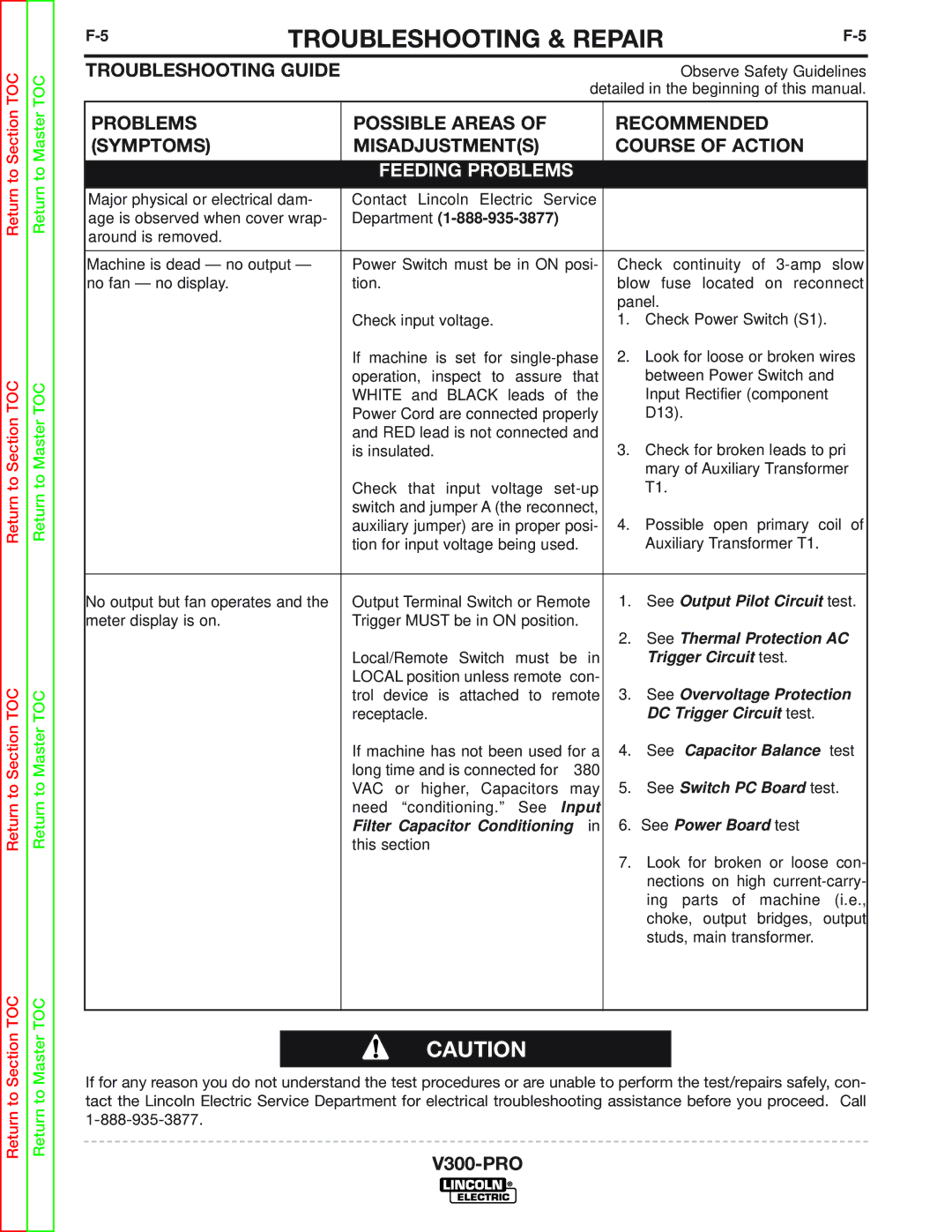SVM105-B specifications
The Lincoln Electric SVM105-B is a state-of-the-art welding machine that represents a leap forward in welding technology, designed for both professionals and enthusiasts in the welding industry. This versatile machine combines robust performance with user-friendly features, making it suitable for a wide range of welding applications.One of the key features of the SVM105-B is its advanced inverter technology. This allows for a lightweight design without compromising on power output. The inverter technology ensures a stable arc and precise control, enabling consistent weld quality across various materials, including mild steel, stainless steel, and aluminum. This feature is particularly beneficial for users who demand exceptional performance in both thin and thick materials.
The SVM105-B also boasts an impressive output range, typically between 10A to 105A, allowing for adaptability to different welding tasks. Its ability to seamlessly switch between DC and AC modes makes it an ideal choice for professionals working in diverse environments, facilitating operations such as TIG and stick welding. This versatility is further enhanced by its compatibility with various electrode types, ensuring a more efficient and effective welding process.
User safety and comfort have not been overlooked in the design of the SVM105-B. Equipped with an efficient cooling system, this machine effectively manages heat during prolonged use, ensuring durability and longevity. Additionally, its intuitive digital display provides real-time feedback on settings, making it easier for users to monitor parameters and make necessary adjustments on the fly.
The SVM105-B is built with portability in mind. Its compact and lightweight design makes it easy to transport, enabling welders to bring their equipment to job sites without hassle. Furthermore, the machine features sturdy handles that contribute to its ease of maneuverability, supporting the demands of both inside workshops and outdoor projects.
Moreover, Lincoln Electric places a strong emphasis on quality and reliability, and the SVM105-B is a testament to this commitment. The machine is constructed from durable materials designed to withstand the rigors of daily use, ensuring it remains a staple in any welder's toolkit for years to come.
In conclusion, the Lincoln Electric SVM105-B stands out with its combination of advanced inverter technology, versatile output, user-friendly interface, and robust construction. Whether for professional or hobbyist use, this welding machine meets a wide array of welding needs while providing excellent performance and durability.

